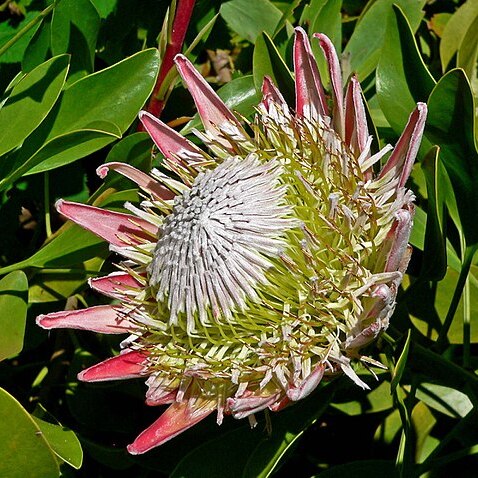Trees or shrubs. Stipules absent. Leaves alternate, rarely opposite or whorled, simple or variously divided. Inflorescences axillary, ramiflorous, cauliflorous, or terminal, simple or rarely compound, with flowers borne laterally either in pairs or sometimes singly, racemose, sometimes spicate, paniculate, or condensed into a head; bracts subtending flower pairs usually small, sometimes accrescent and woody; floral bracts usually minute or absent. Flowers bisexual or rarely unisexual and dioecious, actinomorphic or zygomorphic. Perianth segments (3 or)4(or 5), valvate, usually tubular in bud; limb short, variously split at anthesis. Stamens 4, opposite perianth segments; filaments usually adnate to perianth and not distinct; anthers basifixed, usually 2-loculed, longitudinally dehiscent, connective often prolonged. Hypogynous glands 4 (or 1-3 or absent), free or variously connate. Ovary superior, 1-loculed, sessile or stipitate; ovules 1 or 2(or more), pendulous, laterally or basally, rarely subapically attached. Style terminal, simple, often apically clavate; stigma terminal or lateral, mostly small. Fruit a follicle, achene, or drupe or drupaceous. Seeds 1 or 2(or few to many), sometimes winged; endosperm absent (or vestigial); embryo usually straight; cotyledons thin or thick and fleshy; radicle short, inferior.
Trees, shrubs or suffrutices. Leaves alternate or rarely opposite or verticillate, usually coriaceous, estipulate, entire to toothed or lobed or pinnate. Inflorescence a raceme, spike or head. Flowers ? or rarely (not in East Africa) dioecious, zygomorphic. Perianth 4-merous, the segments ± fused into a tube in bud but variously separating in flower, in native genera differentiated into a swollen base, narrow claw and expanded terminal limb, with the tube splitting before the limb to release a loop of the style while the stigma remains enclosed in the limb. Staments 4, fused to the perianth and (in Flora area) lying inside the limb, attached opposite the perianth-segments, the filaments largely adnate to the perianth-segments and the anthers free. Four small hypogynous scales often present on the receptacle between perianth and ovary. Ovary superior, sessile or shortly stalked, often clothed with long hairs, 1-locular with ovules variously numerous in 2 series, or 2, or solitary and orthotropous or amphitropous to anatropous; style (in Flora area) long, often exceeding the perianth, variously modified distally into a filiform to expanded pollen-presenter. Fruit a follicle, capsule, drupe or nut
Ovary superior, sessile or shortly stalked, often clothed with long hairs, unilocular with ovules variously numerous in 2 series, or 2, or solitary and orthotropous or amphitropous to anatropous; style (in the Flora Zambesiaca area) long, often exceeding the perianth, variously modified distally into a filiform to expanded pollen-presenter
Perianth 4-merous, the segments ± fused into a tube in bud but variously separating in flower, in the native genera differentiated into a swollen base, narrow claw and expanded terminal limb, with the tube splitting before the limb to release a loop of the style while the stigma remains enclosed in the limb
Stamens 4, fused to the perianth and (in the Flora Zambesiaca area) lying inside the limb, attached opposite the perianth segments, the filaments largely adnate to the perianth segments and the anthers free
Calyx petaloid, tetramerous, valvate, tubular in bud, one segment soon splitting away from the others and releasing the style, three segments remaining united
Leaves alternate or rarely opposite or verticillate, usually coriaceous, estipulate, entire to toothed or lobed or pinnate
Flowers hermaphrodite or rarely (not in the Flora Zambesiaca area) dioecious, zygomorphic
Four small hypogynous scales often present on the receptacle between perianth and ovary
Stamens 4; anthers opposite the calyx-lobes, subsessile, 2-celled, opening lengthwise
Ovary superior, 1-celled; style long, simple; ovule 1 (in our species), subpendulous
Leaves alternate, rarely opposite, simple or much divided; stipules absent
Flowers (in our species) in a bracteate capitulum or elongated spike
Fruit a nut, densely bearded, crowned by the persistent style
Fruit a follicle, capsule, drupe or nut
Inflorescence a raceme, spike or head
Hypogynous scales often present
Trees, shrubs or suffrutices
Seed without endosperm
Trees or shrubs

